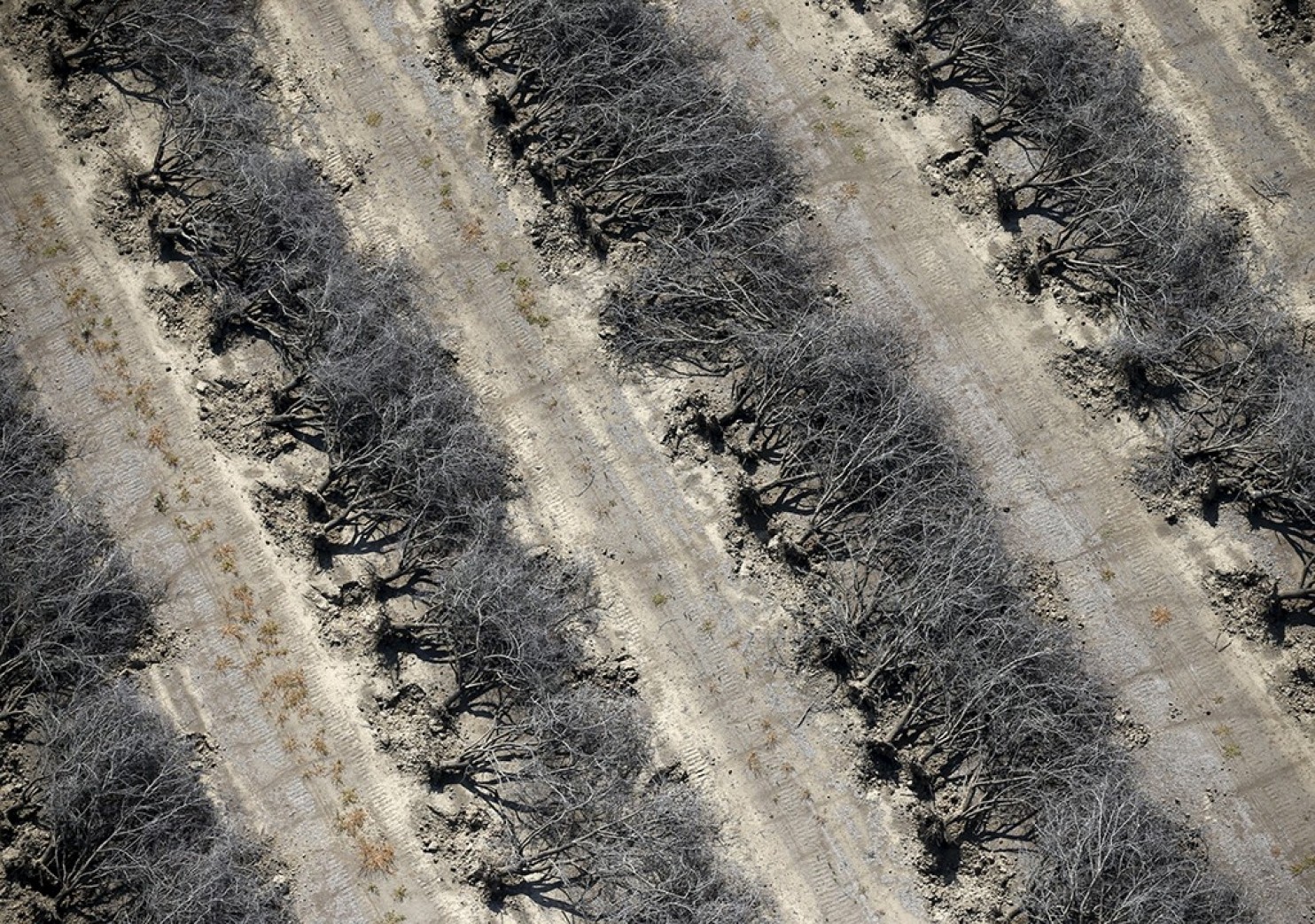
OVERVIEW
MANAGEMENT
PERFORMANCE
POSSIBILITIES
CAPITALS
ACTIVITIES
ACTORS
BURGESS
Climate Change ... California Drought |
|
Burgess COMMENTARY |
|
More than 12 million trees killed by California drought
In cities across California, parched, brown lawns have become a symbol of the West’s worsening drought. To comply with the state’s historic water restrictions enacted Tuesday, showers will be shortened, laundry loads will be limited and yard sprinklers will most certainly be turned off. But in California’s 33 million acres of forest, the starkest evidence of the drought’s toll is a brick-colored pine tree, its needles brittle and broken. Each red tree is a dead tree. And drought-stricken California now has 12.5 million of them. That’s according to a recent survey from the U.S. Forest Service, which examined more than 8.2 million acres of Californian forest last month and found dead trees on nearly 1 million of them as a result of the recent extreme weather — a swath of devastation about the size of Rhode Island. “The national forest is stressed out,” William Patzert, a climatologist at NASA’s Jet Propulsion Laboratory, told the Los Angeles Times. [Wild animals in drought-stricken Western states are dying for a drink] The aerial survey used a digital mapping system to track the devastation in California’s many state and national forests, as well as some private land. The vast majority of dead trees were in the Sierra Nevada (home to Yosemite and Sequoia National Parks, among others), though about 15 percent of the trees were in forests in southern California. “When you start thinking about what it takes for a tree, which is usually a fairly hearty type of plant to die off, it’s telling you a pretty clear signal of just how intense the drought has been,” Brian Fuchs, a climatologist with the National Drought Mitigation Center, told San Diego’s KPBS. Dead trees stand in a field on April 24 in Fresno, Calif. (Justin Sullivan/Getty Images) For many of the trees, the cause of death wasn’t outright from thirst but from bark beetles. The tiny pests, no larger than a grain of rice, thrive in the warm, dry conditions and feast on the drought-weakened trees. “Things are looking really, really bad,” Tom Smith, a forest pest management specialist for the California Department of Forestry and Fire Protection, told the San Francisco Chronicle. “… [The beetles] are only successful in attacking the trees when the trees are stressed. Right now all the trees are stressed because of drought.” Smith, who has been studying bark beetles for 15 years, said this year’s damage is the worst he’s ever encountered. “It’s scary in areas — the amount of dead and dying trees I am seeing,” he said. “It’s epidemic and it’s probably going to get even worse.” Officials are anxious about more than the loss of forest. The acres of dead and dried-out trees are effectively giant patches of tinder — and, in the coming summer heat, they could easily go up in flames. The California Department of Forestry and Fire Protection told the LA Times that it has added extra firefighters to its staff in preparation for the upcoming season. Ideally, the department would also like to see landowners clear dry brush and dead trees and thin out overcrowded stands of timber that could fuel a potential blaze. “We don’t want to create alarm, but this is a forest health issue that has become a public safety issue,” Ken Pimlott, the department’s director, told the Chronicle. Patzert, the NASA climatologist, called the situation “incendiary.” Gov. Brown: California drought is catalyst for change Play Video1:00 Aside from the fire hazard, the loss of trees can lead to a host of other concerns. Dead trees might topple over onto people, homes or cars. The dying forests will disrupt ecosystems and local communities — animals that hide among the foliage and make their homes in the branches will be pushed elsewhere, as will any humans who rely on the forest. And without roots to keep it stable, the soil of denuded forests easily erodes — disrupting the landscape and potentially affecting the water supply. Climate scientists also point out that trees are necessary to absorb carbon dioxide — so, dying forests mean more greenhouse gases in the atmosphere and an acceleration of global warming. Jeffrey Moore, interim aerial survey program manager for the Forest Service, told the LA Times that researchers haven’t seen so many trees die since the mid-1970s, when California was struck by what has been called the worst drought in state history. An estimated 14 million trees died during that period. But if conditions continue as they’ve been, the tree loss in the current drought could be worse. The National Oceanic and Atmospheric Administration’s most recent “seasonal drought outlook” for the region forecasts above-normal temperatures and “persistence or intensification” of the drought. “Relief is highly unlikely,” forecaster Rich Tinker wrote. Given that gloomy assessment, Moore believes that the forest die-off will escalate as California heads into its warmest months. “It is almost certain that millions more trees will die over the course of the upcoming summer as the drought situation continues and becomes ever more long term,” he told the LA Times. “The situation is pretty severe,” he also said.
|
|
By Sarah Kaplan
May 7 2015 |
| The text being discussed is available at http://www.washingtonpost.com/news/morning-mix/wp/2015/05/07/more-than-12-million-trees-killed-by-california-drought/ and |
